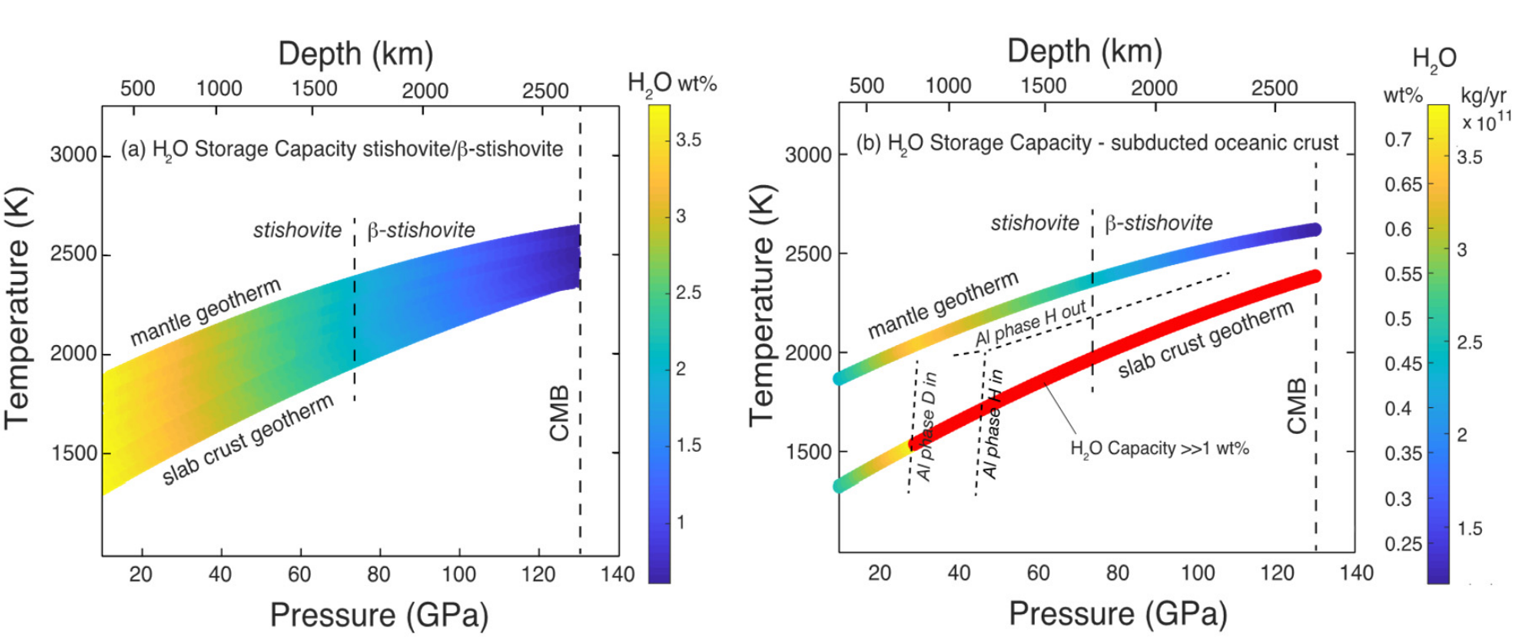Hydrous SiO2 in subducted oceanic crust and H2O transport to the core-mantle boundary - Dr. Yanhao Lin
JULY 23, 2022
New study from a team of scientists co-led by Drs. Yanhao Lin, Qingyang Hu and Ho-kwang Mao from HPSTAR and Michael Walter from Carnegie Institution for Science, first quantified the water storage capacity in stishovite of ~3.5 wt% in the transition zone and shallow lower mantle, decreasing to about 0.8 wt% at the base of the mantle. This study shows that stishovite / post-stishovites as major minerals in deep mantle can host significant amounts of H2O even at high mantle temperatures and provide a unique mechanism for transport and storage of water in the deepest mantle. The research is published in the recent issue of Earth and Planetary Science Letters.
We know that there are oceans on Earth’s surface which makes it a blue planet. On the surface, water cycles are generally running through the movement of glacier, cloud and rainfalls. How water is transported into the Earth’s core-mantle boundary and which minerals act as the carriers at extreme pressure-temperature conditions?
"To get down into the deepest mantle, water must be incorporated into minerals and remain stable under the conditions found deep inside the planet” explained lead author Dr. Lin.
Previous work revealed that silicate minerals have stored substantial amounts of water from the Earth’s upper mantle to the top of lower mantle. The team of scientists utilized laser-heated diamond anvil cell to mimic the lower mantle conditions, they found that stishovite, a key mineral of deep mantle, is capable of storing and transporting large amounts of water even under extreme conditions like those found in Earth’s lower mantle.
They are the first who provided in situ experimental evidence for stishovite storing weight percent levels of water along the deep Earth conditions. “Dry stishovite will get rehydrated when it meets hydrous melt or fluid,” explained Dr. Hu. “In some localized regions of Earth’s interior, like the mid-ocean ridge basalt (MORB), stishovite becomes a modally abundant phase with roughly 23 % by number at the lower mantle conditions”.
"Stishovite is a silica-based mineral and a major component of the oceanic crust.” explained Dr. Mao. “In plate tectonics, there are areas called subduction zones where an oceanic plate slides beneath a continental plate, sinking from the Earth’s surface into its depths. When this happens, stishovite/post-stishovites is transported into the mantle.”
The results indicate hydrous stishovite is among the many candidates of so-called dense hydrous phases that were only realized in the last decade. Compared with other dense hydrous minerals, stishovite silica can still hold a great deal of water at very high temperatures and pressures. The high H2O storage capacity of stishovite in oceanic crust provides a conduit for water transport from the upper mantle to the core mantle boundary. Over 4 Ga of subduction, about 1.4 ×1021kg of H2O can be added to the lower mantle transported in stishovite alone at current crustal production rates, or about one ocean mass.

Caption: (a) H2O storage capacity (wt%) in stishovite and b-stishovite; (b) Estimated storage capacity of oceanic crust.
